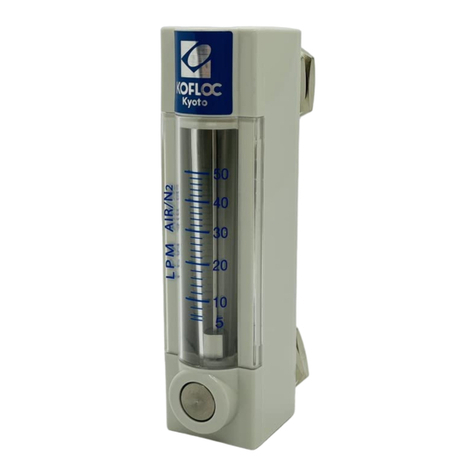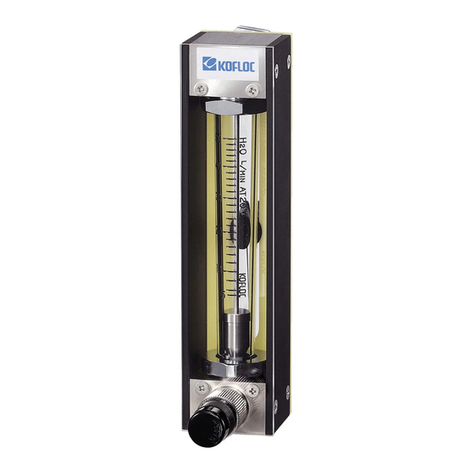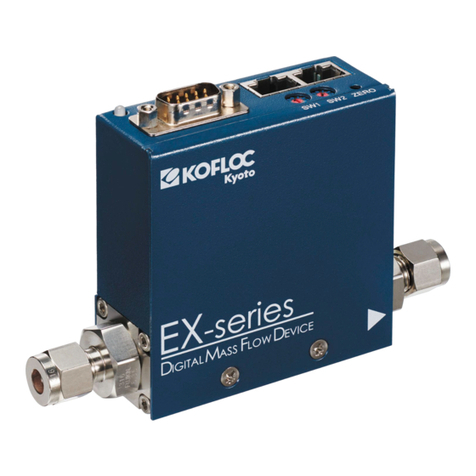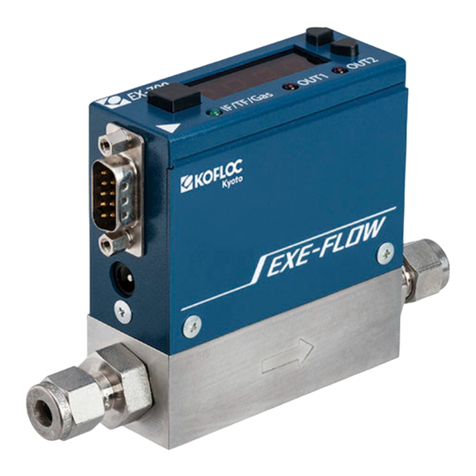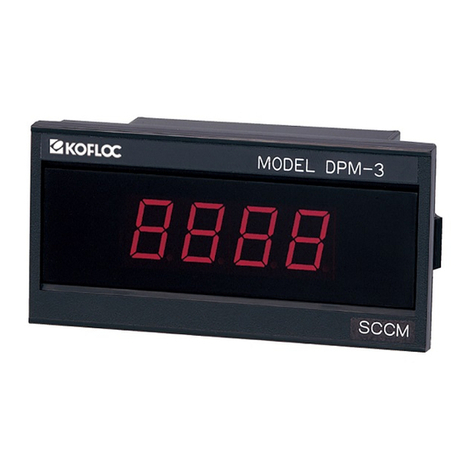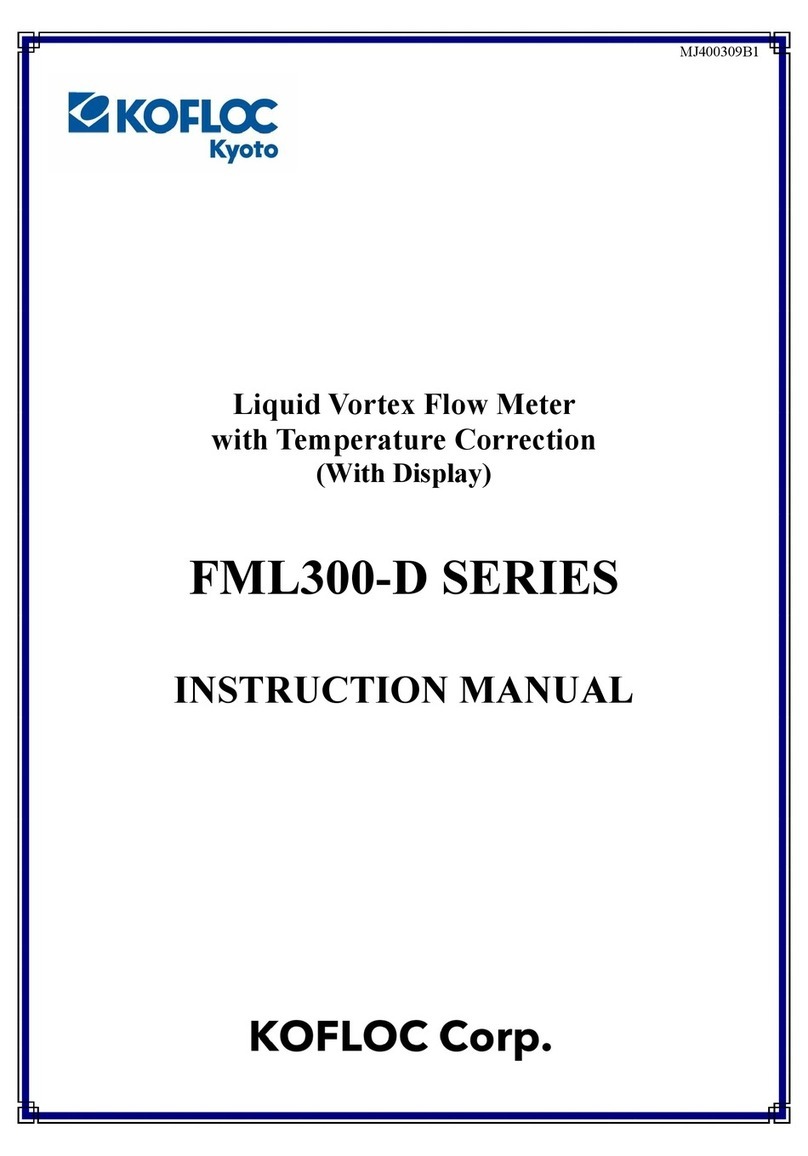MJ400063H1
2.6 Operating
2.6.1 Operating Conditions
For proper operation, the combination of ambient temperature must be such that the flow
meter temperature remains between 0 and 60℃. The301/303 series is intended for use in
non-condensing environments only.
2.6.2. Zero Check
Turn the power supply on if not already energized. Allow for a 1hour warm-up. Stop all flow
through the instrument and wait 2 minutes. Caution:Do not assume that all metering valves
completely shut off the flow. Even a slight leakage will cause an indication on the meter and an
apparent zero shift. For the standard 0-5VDC output, adjust the zero potentiometer located on
the lower inlet side of the flow meter until the meter indicates zero. For the optional 4-20mA
output, adjust the zero potentiometer so that the meter indicates slightly more than 4mA, i.e.
4.03 to 4.05mA. This slight positive adjustment ensures that the 4-20mA current loop
transmitter is not in the cut-off region. The error induced by this adjustment is approximately
0.3%of full scale. This zero should be checked periodically during normal operation. Zero
adjustment is required if there is a change in ambient temperature, or vertical orientation of the
flow orientation of the flow ,meter / controller.
2.6.3 Blending of Gases
In the blending of two gases, it is possible to maintain a fixed ratio of one gas to another. In this
case,the output of one flow controller is used as the reference voltage for set point potentiometer
of a second flow controller. The set point potentiometer then provides a control signal that is
proportional to the output signal of the first flow controller. The set point potentiometer then
provides a control signal that is proportional to the output signal of the first flow controller,and
hence controls the flow rate of the second gas as a percentage of the flow rate of the first gas.
EXAMPLE:Flow controller A has 0-100slpm range with a 5.00V output at full scale. Flow
controller B has 0-10slpm range with a 5.00V output at full scale. If flow controller A is set at
80slpm,its output voltage would be 4.00V(80slpm/100slpm x5.00V=4.00V).If the output
signal from flow controller A is connected to the command potentiometer of flow controller B,it
then becomes a variable reference voltage for flow controller B proportional to the flow rate of
flow controller A.
If the set point potentiometer of flow controller B is set at 50%of full scale,and the reference
voltage from flow controller A is 4.00,then the command signal going to flow controller B would
be 2.00V(4.00V x 50.0%=2.00V).The flow of gas through flow controller B is then controlled at
4slpm(2.00V/5.00V x 10slpm=4slpm).
The ratio of the gases is 20:1(80slpm/4slpm). The %mixture of gas A is 95.2(80slpm/84slpm
and the %mixture of gas B is 4.8%(4slpm/84slpm).
Should the flow of flow controller A drop to 3.9slpm, hence maintaining the same ratio of the
mixture.(78slpm/100slpm x 5V=3.90V x50%=1.95V;1.95V/5.00V x 10slpm=3.9slpm;
78slpm:3.9slpm=20:1)




